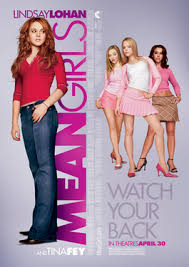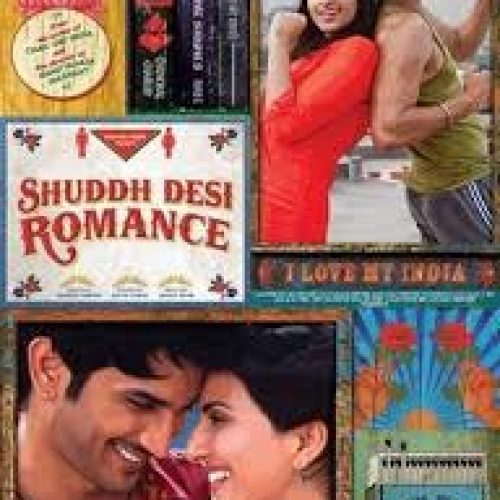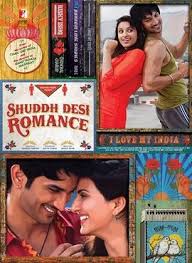In high school, popularity can be as vicious as it is fleeting, and no film captures that better than the iconic teen comedy featuring Lindsay, Rachel, Lacey, and Amanda. Set in a suburban high school in the early 2000s, this comedy-drama dives deep into the chaotic world of cliques, gossip, and high school politics. Directed by Mark and written by Tina, the film quickly became a cult classic, capturing the essence of teenage life with its witty humor and sharp social commentary.
The story follows Cady, a homeschooled teenager who is thrust into the public high school system for the first time after living in Africa for most of her life. Her naivety and awkwardness make her an easy target, but she soon finds herself befriending Janis and Damian, two outcasts who warn her about “The Plastics,” the popular yet ruthless trio led by Regina George. As Cady tries to navigate the treacherous social landscape, she’s caught in a web of manipulation, backstabbing, and toxic friendships, all while losing sight of her true self. The film explores the highs and lows of teenage popularity without revealing all the twists that ensue.
One of the standout features of the film is its sharp, memorable dialogue, which feels like a language of its own. Tina, who penned the screenplay, delivers a biting script that is equal parts hilarious and insightful. Lines like “On Wednesdays, we wear pink” and “That’s so fetch!” have entered pop culture lexicon, becoming iconic quotes that perfectly encapsulate the absurdity of high school social dynamics. The humor in the film is quick-witted and satirical, making fun of not just high school hierarchies but also the broader absurdities of adolescence. Tina’s writing blends comedy with a sense of reality, giving the film a unique tone that resonates with audiences long after it ends.
The performances by the cast elevate the script even further. Lindsay shines as Cady, skillfully portraying the transformation from innocent newcomer to someone swept up in the drama of high school. Her ability to show vulnerability and gradual moral corruption is compelling, making her a relatable protagonist. Rachel is unforgettable as Regina, the queen bee whose manipulative and controlling nature makes her both terrifying and fascinating. Rachel’s performance brings Regina to life with such precision that she embodies the perfect villain: one you love to hate. Amanda, as the ditzy Karen, and Lacey, as the shallow Gretchen, provide excellent comedic relief, and their interactions with Regina form the backbone of The Plastics’ dynamic.
The film also excels in its costume design, with each character’s wardrobe serving as a visual extension of their personality. Regina’s sleek, pink outfits scream “queen bee,” while Janis’ goth-inspired wardrobe signifies her rebellion against the popular crowd. The careful attention to detail in costuming adds an extra layer of storytelling. Every outfit, from Cady’s awkward first-day look to the Plastics’ coordinated ensembles, helps define the characters and their social standing, making it easy for the audience to understand the roles they play within the high school hierarchy.
Another significant aspect is the film’s soundtrack, which perfectly complements the high school setting. Featuring a mix of early 2000s pop and indie rock, the music captures the emotions of the teenage characters, from angst to triumph. The song choices reflect the time and give the film a nostalgic feel. Iconic tracks like Kelis’ “Milkshake” and Blondie’s “One Way or Another” are used cleverly to enhance key scenes, adding an extra layer of energy and humor. The musical cues align with the film’s satirical nature, making the soundtrack a crucial component of the overall experience.
Visually, the cinematography is straightforward yet effective, with clever use of framing to highlight the power dynamics at play. Scenes at the lunch table, for example, where the Plastics hold court, are shot in a way that mirrors a royal throne room, with Regina always in the center. This visual metaphor subtly reinforces her dominance in the social structure. Mark keeps the pacing tight, ensuring there’s never a dull moment as the story unfolds. The direction is sharp, and the transitions between humor and the darker aspects of the film’s themes—such as bullying and peer pressure—are handled with care.
The film’s themes are where it truly stands out. Beneath its comedic surface, the movie tackles serious issues like the toxicity of high school cliques, the pressure to fit in, and the impact of gossip. Cady’s journey is a cautionary tale about the dangers of losing yourself in the pursuit of popularity. It’s also a commentary on how easily people can be influenced by others, especially in environments as socially charged as high school. Despite its humor, the film never shies away from showing the emotional toll that such behavior can take on individuals, particularly young women.
The idea of peer pressure and the desire for acceptance are universally relatable themes, and the film approaches them with both wit and empathy. The Plastics, for all their cruelty, are also products of a system that rewards superficiality and punishes individuality, making them both villains and victims in their own right. This nuanced portrayal of high school life gives the film depth beyond its comedic exterior, making it resonate with audiences of all ages.
Overall, this film is a masterful blend of sharp writing, strong performances, and cultural relevance. It’s not just a teen comedy; it’s a smart, satirical take on high school life that holds up even years after its release. The combination of laugh-out-loud humor and thoughtful commentary on social issues gives the film a timeless quality. It’s not just about popularity and mean girls—it’s about identity, self-worth, and the complicated process of growing up.
For anyone who enjoys smart comedies with heart, this is a must-watch. It’s entertaining, hilarious, and surprisingly thought-provoking, making it more than just your average high school film. Whether you’re revisiting it for the nostalgia or watching it for the first time, the film remains as fresh and relevant as ever.







